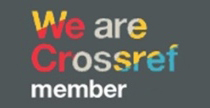STUDI KOMPARASI INFOGRAFIS PENCEGAHAN VIRUS CORONA
DOI:
https://doi.org/10.51804/deskovi.v3i1.693Keywords:
virus Corona, infografis, prinsip desain analitik Tufte, semiotika PeirceAbstract
Infografis digunakan oleh media massa untuk menyampaikan informasi dan kontrol sosial terkait fenomena yang sedang terjadi termasuk persebaran virus Corona yang semakin meluas ke Indonesia sejak Maret 2020. Tujuan penelitian ini adalah untuk mengetahui tingkat penerapan prinsip desain analitik dalam infografis pencegahan virus Corona, serta untuk mengetahui makna dari tanda-tanda di dalamnya. Sampel infografis dikumpulkan dari lima media berita online di Indonesia yang dipublikasikan dari bulan Januari hingga April 2020 dalam batasan konteks pencegahan virus Corona. Prosedur penelitian dibagi menjadi dua kelompok. Pertama, metode komparatif kuantitatif melalui penyebaran angket dengan modifikasi System Usability Scale (SUS) untuk mengetahui efektivitas penerapan prinsip-prinsip desain analitik dari Edward Tufte. Kedua, metode kualitatif deskriptif melalui pendekatan semiotika dari Peirce untuk mengungkap makna tanda visual dan verbal. Hasil penilitian menyatakan bahwa kelima infografis tersebut sudah memperhatikan prinsip desain analitik seperti hubungan sebab-akibat, persuasi, keterbacaan, dan komprehensif, serta sebagian besar menggunakan pendekatan naratif eksploratif sebagai struktur penyampaian informasi.
Infographics is used by the mass media to convey information and social control related to the phenomenon that is happening, including Corona virus which has increasingly spread to Indonesia since March 2020. The purpose of this study was to determine the level of application of infographic analytic design principles related to Corona virus prevention, as well as to find out the meaning of the signs inside. The infographic sample was collected from five online news media in Indonesia, which were published from January to April 2020 within the context of the Corona virus prevention context. The research procedure was divided into two groups. First, quantitative comparative methods through questionnaires using the modification of System Usability Scale (SUS) analysis to determine the effectiveness of applying analytic design principles of Edward Tufte. Second, the descriptive qualitative method through Peirce's semiotics approach to reveal the meaning of visual and verbal signs. The research stated that the seven infographics had paid attention to analytic design principles such as causability, persuasion, legibility, and comprehensive, also used explorative narrative approaches as a structure for information delivery.
Downloads
References
Bahari, N. (2017). Kritik Seni. Pustaka Pelajar.
Benoit, G. (2019). Introduction to Information Visualization. Rowman & Littlefield.
Brooke, J. (1996). SUS - A quick and dirty usability scale. In P. W. Jordan, B. Thomas, B. A. Weerdmeester, & I. L. McClelland, Usability Evaluation in Industry. Taylor & Francis Ltd.
Fiske, J. (2002). Introduction to communication studies. Taylor & Francis e-Library.
Lankow, J. (2014). Infografis: Kedahsyatan Cara Bercerita Visual. Terjemahan Alex Tri. PT Gramedia Pustaka Utama.
Liputan6.com. (2020, April 8). 4 Negara Ini Putuskan Tidak Lockdown karena Virus Corona. Retrieved from Liputan6.com: https://www.liputan6.com/global/read/4204231/4-negara-ini-putuskan-tidak-lockdown-karena-virus-corona-seperti-indonesia
Piliang, Y. A. (2012). Semiotika dan Hipersemiotika: Gaya, Kode dan Matinya Makna. Pustaka Matahari.
Sobur, A. (2001). Analisis Teks Media: Suatu Pengantar Untuk Analisis Wacana, Analisis Semiotika dan Analisis Framing. Remaja Karya.
Tufte, E. R. (2006). Beautiful Evidence. Graphic Press LLC.
WHO. (2020, April 8). Coronavirus. Retrieved from World Health Organization: https://www.who.int/health-topics/coronavirus#tab=tab_1
Wilson, C. (2013). Credible Checklists and Quality Questionnaires: A User-Centered Design Method. Elsevier.
Downloads
Published
How to Cite
Issue
Section
License
With the receipt of the article by DADJ Editorial Board and the decision to be published, the copyright regarding the article will be transferred to DADJ. The copyright transfer form can be downloaded here.
DADJ has the right to multiply and distribute the article and every author is not allowed to publish the same article that was published in this journal.

DESKOVI: Art and Design Journal is licensed under a Creative Commons Attribution 4.0 International License.
Under the following terms:
Attribution — You must give appropriate credit, provide a link to the license, and indicate if changes were made. You may do so in any reasonable manner, but not in any way that suggests the licensor endorses you or your use.






